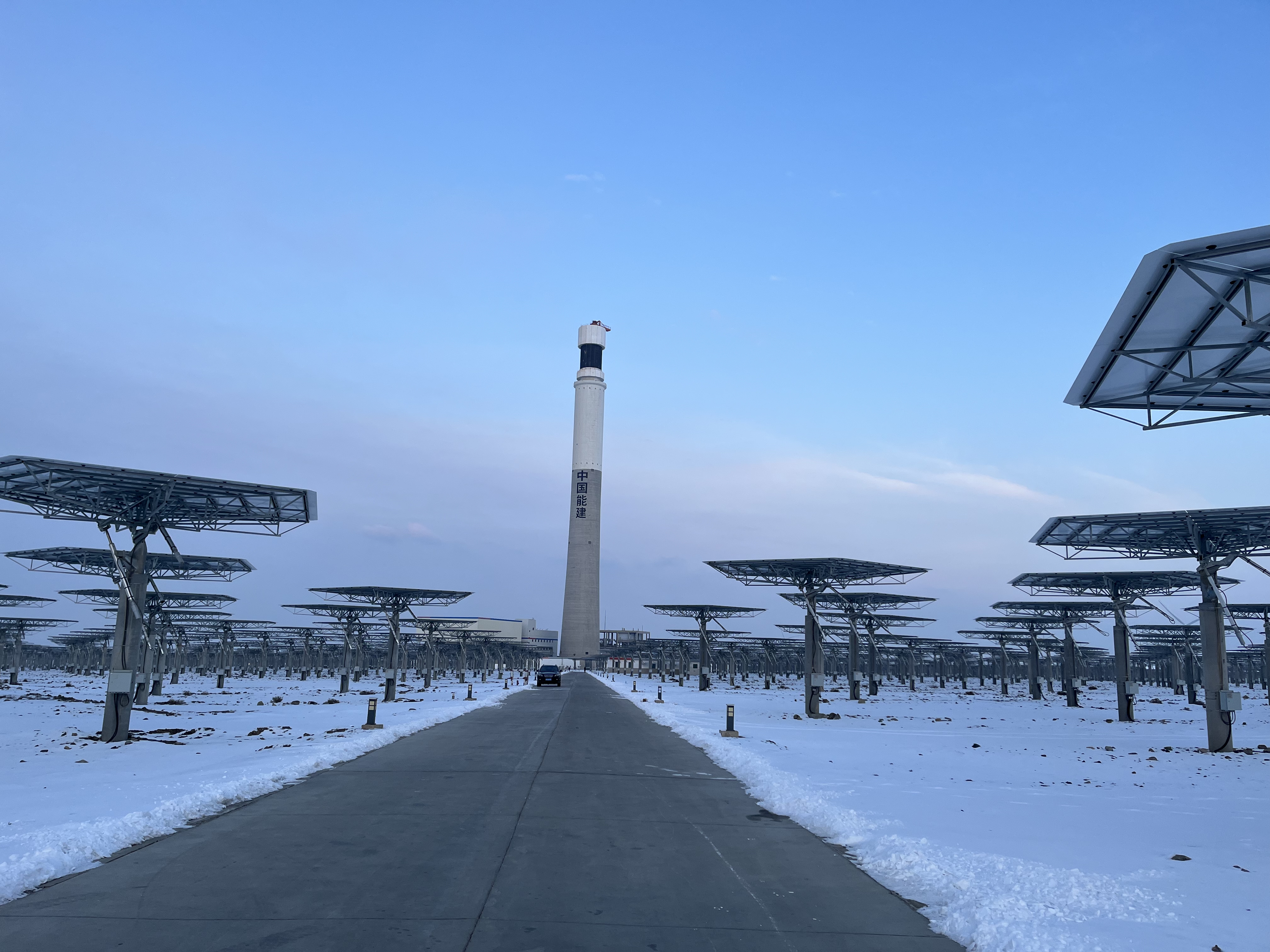Xinjiang Powers Ahead with Renewables
By LI Linxu
With wind turbines and solar panels seen everywhere in its vast Gobi and deserts, Xinjiang Uygur Autonomous Region is making great strides in renewables, a boon to its green and low-carbon development.
Visiting the 50-megawatt solar power station in Hami, east Xinjiang, is like immersing oneself into a Hollywood sci-fi film set.
On a wide stretch of Gobi, more than 14,500 pentagonal mirror-like devices are installed in concentric circles. At the very center of the circles stands a 220-meter-high molten salt tower for heat absorption.
"When the sun rises, these mirrors will move like sunflowers," Wang Chao, deputy chief engineer of the station, told Science and Technology Daily (S&T Daily) recently. With its "light-heat-electricity" power generation mode, the station can generate power 24/7, because it can store solar energy and provide stable electricity supply at nights.

The 50-megawatt solar thermal power station in Hami, Xinjiang Uygur Autonomous Region. (PHOTO: Li Linxu/S&T Daily)
"It is also zero-polluting," said Feng Xiaoheng, operational director of the station, adding that as Xinjiang's first solar thermal power generation demonstration project, the station can generate 198 million kWh annually, saving 61,900 metric tons of standard coal a year.
"Tapping its abundant solar and wind energy, Hami is advancing the high-quality development of renewables in light of local conditions," said Zhang Xiaoyi, director of the Hami Municipal Development and Reform Commission, during an interview with S&T Daily.
By the end of 2025, the prefecture-level city's installed capacity of renewable energy is expected to reach 40 million kilowatts, according to Zhang. Currently, the figure stands at 16 million kilowatts, ranking first in Xinjiang.
Hami epitomizes Xinjiang's green and low-carbon push, with a slew of large-scale renewable projects going at full throttle. Apart from Hami, Xinjiang is accelerating the construction of more 10-million-kilowatt renewable energy bases in areas such as Zhundong and Ruoqiang.
This year, Tulufan, a prefecture-level city in Xinjiang, kicked off four solar-thermal- photovoltaic integrated projects, with a total installed capacity of four million kilowatts.
At present, the capacity of renewable energy projects under construction exceeds 70 million kilowatts in Xinjiang, according to the latest official statistics. With the construction of such projects at full steam, Xinjiang's low-carbon push has shifted into high gear, laying a solid foundation for its high-quality development.






